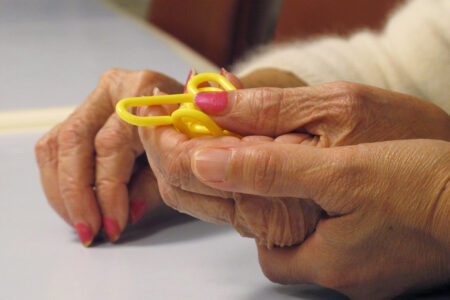
How do we measure success in our societies and the well-being of the population? This is not an academic question, it is significant in terms of politics and policy-making. For decades, gross domestic product (GDP) has been a critical measure of success. But is that really how GDP should be used, and is it truly our best measure of success? Or is there a range of well-being statistics that we could employ for better outcomes?
The 2009 report of the Commission on the Measurement of Economic Performance and Social Progress (the Stiglitz-Sen-Fitoussi Commission, or SSF), established in 2007 by former French president Nicolas Sarkozy, was hugely influential within the statistical community, and a range of national and international initiatives were implemented as a result of its recommendations. Almost 10 years later, the agenda proposed by two reports by the OECD-hosted High-Level Expert Group on the Measurement of Economic Performance and Social Progress (HLEG): For Good Measure: Advancing Research on Well-Being Metrics Beyond GDP and Beyond-GDP has provided a roadmap for the decade ahead.
If measurement is the point of departure of these reports, their ambition goes much wider. Their central message is “what we measure affects what we do. If we measure the wrong thing, we will do the wrong thing. If we don’t measure something, it becomes neglected, as if the problem didn’t exist.” In other words, measurement issues are not only technical, but go to the root of how democratic systems function. As the authors note, “the gap between the ‘experts’ and the citizens they are supposed to be serving has played an important role in the bitter divisions within society that have been so vividly demonstrated in a number of recent elections.”
This is not to dismiss the importance of GDP, which is a critical measure for assessing macro-economic conditions and the effects of a range of policies. But the GDP was designed to be the yardstick to gauge the overall “success” of a country and the well-being of its people. What is needed is a broader range of well-being statistics, more granular and more timely data that better capture the state of the economy and society, the diverse situations of different population groups, and the threats to the long-term sustainability of our development model.
The 2008 financial crisis and its aftermath illustrate why such a change of perspective is needed. As noted in the HLEG summary report, Beyond GDP, the GDP loss that followed the 2008 crisis was not the temporary, one-off event predicted by conventional macro-economic models. It was not a blip followed by recovery to previous levels and then continuing on an unchanged trend. On the contrary, the crisis caused a permanent loss of output, as significant amounts of the different types of capital that support economic activity and people’s well-being were “lost” in the recession and the weak recovery that followed. This included physical capital, such as machines and building structures, but also “hidden capital” in the form of lower skills associated with long-term unemployment, less on-the-job training provided by firms, the permanent scars on young people entering the labour market during a recession, and the loss of trust in a political system perceived as “rigged” to benefit just a few. The crisis also reinforced pre-existing inequalities, such as in income and wealth, and focused attention on new inequalities, for example, in skills, longevity, social mobility, and subjective well-being.
The misuse of existing metrics also contributed to “wrong” policy responses to the crisis. The report by HLEG laid bare the misplaced focus on (gross) public debt; that is, it ignored the asset side of government balance sheets, the financial position of other sectors of the economy (banks, households), and the accumulation of hidden debt owed to nature and to other citizens (in the form, for example, of crumbling infrastructure, higher economic insecurity, forgone job training and loss of job-specific skills). The report then showed how that misplaced focus contributed to stifling more expansionary fiscal policies at the very moment when those policies would have been most effective, due to a combination of high fiscal multipliers during recessions and record-low costs of public borrowing.
The HLEG reports considered what needs to be done to improve people’s well-being and sustainability of those measures. They emphasise the importance of better measuring people’s material conditions but also the quality of their lives – looking beyond average outcomes to inequalities across a wide range of outcomes, the resources needed to ensure sustainability, and the extent to which these are approaching (when not trespassing upon) critical tipping points and environmental boundaries.
It is important to better measure the quality of people’s lives, looking to inequalities across a wide range of outcomes and to the resources needed to ensure sustainability.
Although better measures of “social progress” are needed, that is not enough. Having the right diagnosis is just the beginning. What matters is to anchor these measures in the policy process, in ways that survive the vagaries of electoral cycles. Several countries have recently used well-being indicators in various phases of the policy-making process such as identifying priorities for action, assessing the advantages and disadvantages of different strategies to achieve a given goal, helping allocate the resources needed to implement the selected strategy, monitoring interventions in real time, and auditing the results. The New Zealand government’s 2019 “well-being budget” is the most visible of these approaches, but there has been many others. Italy and France have used well-being metrics in national budgets, various governments have used subjective well-being measures in cost-benefit analysis, and similar approaches were used by national governments in Scotland, Wales and Northern Ireland following devolution. These experiences hold the promise of delivering policies that, because they go beyond the traditional silos, are more effective in achieving their goals and in improving people’s lives, as well as in overcoming the barriers between elites and others that are at the root of today’s political crises.
Canada could be part of this discussion. At one level, Canada’s policy-makers already have most of the data they need to look “beyond GDP,” and our federal structure creates scope for policy innovation at the provincial level. But there is currently no federal initiative with the scope and ambition of New Zealand’s well-being budget. Therefore, we must ask: is it time for a change?
This article is part of the Ensuring inclusive prosperity when all boats aren’t being lifted special feature.
Photo: Shutterstock, by Romolo Tavani.
Do you have something to say about the article you just read? Be part of the Policy Options discussion, and send in your own submission. Here is a link on how to do it. | Souhaitez-vous réagir à cet article ? Joignez-vous aux débats d’Options politiques et soumettez-nous votre texte en suivant ces directives.









